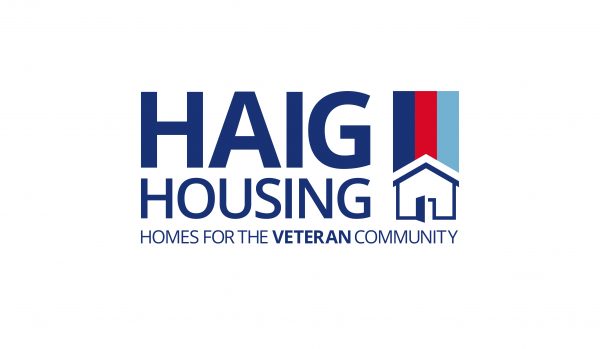Information also available here.
Introduction
The Charity Commission recognises that many charities are facing difficult circumstances resulting from rapidly increasing costs. This may include their own cashflow but also concern for those they serve and for their own staff facing cost of living pressures. Some charities are also experiencing increased demand, particularly charities providing services to people in need. Donors may also be feeling financial constraints, leading to reduced income for some charities.
These financial challenges can have a major effect on charities and those who depend on them. This guidance is for trustees, especially trustees of smaller charities, who may need help when facing difficult decisions about their charity’s financial position. It does not directly address wider issues that those in the charity may face, such as staff hardships, but guidance is available for trustees from other organisations to support with this.
Trustees’ duties and decision-making
In these challenging circumstances, it is important that trustees continue to understand and comply with their duties to provide effective financial stewardship, and to ensure that any decisions are in the best interests of the charity and legally sound.
As with any trustee decisions, if you are making decisions for your charity to address financial pressures you must:
- act within your powers under your charity’s governing document and the law
- act in the best interests of the charity to carry out your charity’s purposes, even if the ways of furthering those purposes may need to change
- act with prudence to manage your charity’s resources responsibly and accountably
- act with reasonable care and skill and take appropriate advice when necessary – this is particularly important if the charity or its property may be at risk due to financial challenges
- manage any conflicts of interest
The Commission recommends trustees read our guidance on:
- Trustees’ duties: The essential trustee: what you need to know, what you need to do (CC3).
- Making sound trustee decisions: Making decisions at a charity and It’s your decision: charity trustees and decision making (CC27)
There are situations where you need to apply to the Commission for permission before you can decide to do something. For example, certain disposals of land.
Acting in your charity’s best interests
Your starting point for trustee decisions must always be what is in the charity’s best interests. In the context of financial resilience, the Charity Commission’s guidance Charity governance, finance and resilience: 15 questions trustees should ask helps trustees consider what they should focus on.
There are likely to be a number of factors to account for, including the balance between:
- reducing costs now in order to be able to preserve funds to support beneficiaries in the future, and
- meeting the immediate needs of the charity’s present beneficiaries with the possibility that in the future the charity will have to reduce its services or close entirely
In reaching your decisions, it can be helpful to have open communication with beneficiaries, supporters, staff and volunteers. However, those consulted should be clear that the final decision will be made by the trustees.
Taking into account the risks of your decisions
Trustees must assess the risks that may arise from the decisions they make. In periods of financial difficulty those risks may include:
- whether the charity will continue to be able to safeguard beneficiaries and protect them from harm as it goes through potentially significant change
- whether it is prudent to sell investments and other assets in order to release funds for current expenditure. Sales may raise less money than might be secured in better economic circumstances. However, it may be in your charity’s best interests, for example, if it is the best option available for meeting urgent needs. You should record clear reasons to support the decision. You may also be able to borrow against your charity’s assets provided you follow the legal requirements
We recognise that these decisions will often be difficult, that there may not be an obvious ‘right’ decision, and that charities may be dealing with high levels of risk during the current cost of living pressures. The Commission also recognises that things may go wrong despite the best efforts of trustees to act in their charity’s best interests.
Evaluating your charity’s financial position
Charities may face shortfalls of income in the current financial climate. If your charity is facing increased pressures, there is a greater need to keep the charity’s operations and finances under regular review than would be expected during a more financially secure period. It is important to make sure you have an accurate picture of your charity’s current and planned short-term operations, and the cash flow implications. You should identify:
- all the payments the charity will have to make over a range of timescales (for example, the next few weeks / month / three months / six months)
- what cash is currently available to cover those payments as they fall due
- what income the charity realistically expects to receive over the same timescales, based on a best estimate
This basic form of cashflow forecast should provide a forward-looking view enabling you to identify whether the charity is at risk of running out of the cash it needs and when that shortfall will happen. Trustees can then use it to plan the charity’s short-term operations and enable recovery in the longer term. It is also prudent to consider setting aside a contingency fund to cover unexpected additional costs which may arise.
Robust and frequent reviews of the cashflow forecast will help you manage your finances and evaluate your ongoing ability to carry out your charitable activities. The cashflow forecast can help determine when you might:
- be able to return to a more normal operating environment depending on your charity’s specific circumstances
- need to make temporary or permanent changes or reductions to your operations or services in order to protect your charity’s longer term position
- consider closing or merging the charity. You should consider whether there are trigger points that may indicate that closure is necessary, for example the loss of a major funding stream. To support this decision, it is helpful to understand the likely costs of closure
If you believe your charity may not be able to continue operating, read what to do if your charity cannot continue to operate.
What to do if you experience financial difficulties
Managing a charity’s finances covers the considerations and practical steps you can take to identify the options available when your charity faces serious financial difficulties. If you are not sure how to proceed after considering that guidance, we would always recommend that you take advice. Useful sources of advice include:
- any network to which your charity belongs
- your independent examiner or auditor
Developing options to support continuing operation and delivery
Having sufficient cash flow to continue to operate is essential. You should consider whether there are ways to minimise costs and maximise income to improve your charity’s financial position.
1. Minimising costs
If your charity can continue to operate, consider whether it is possible to:
- stop or put on hold non-essential outgoings, taking account of any cancellation costs
- find alternative, cheaper ways of operating through, for example, use of technology
- team up with other charities with similar aims to share facilities or resources or negotiate cheaper deals. There can be VAT implications where this involves payments between charities, so seek professional advice on this matter. See Considering the option of mergers or collaborative working for further information
- re-allocate staff to the priority tasks relevant to supporting the charity to survive the financial challenges. Take professional advice on the legal implications of transferring staff to different posts
- talk to your charity’s lenders to see if there is any help available for your charity’s borrowings. For example, re-scheduling loan repayments over a longer timescale
It may be possible temporarily to pause some of the charity’s services for a fixed period if costs currently outweigh benefits. If these involve contracts, check if there are penalty charges and whether there is any option of waiving these.
If any decisions may impact on the employment of staff, you should seek professional advice.
2. Reviewing the charity’s funds to see whether any can be released
If your charity has reserves of funds which can be freely used for any of your charity’s purposes, can you use them to address the charity’s current financial difficulties? If you decide to use reserves it may mean you have to cancel or defer commitments that were planned to be funded by those reserves. If you hold reserves as financial investments, you will have to judge whether drawing them down is in the charity’s best interests given the potential loss of the income stream they provide, and the potential loss in value of capital from selling when asset prices are low.
Your charity may have a mix of restricted and unrestricted funds.
Unrestricted funds mean income which can be spent by trustees in any way that achieves the charity’s purposes. If your charity had plans on what to spend the funds on, you can change these plans.
Restricted funds means funds that must be spent on purposes that are narrower than the charity’s purposes and in line with restrictions imposed by for example:
- the donor when they donated the funds to the charity
- the wording the charity used when launching an appeal for funds
You need Charity Commission authority to change how you can spend restricted funds. This is because you would be seeking to change the purposes of the restricted fund.
If you have permanent endowment, trustees can in certain circumstances spend or borrow from permanent endowment. Read Permanent endowment: rules for charities.
If you are considering lifting restrictions to enable disposal of designated land, you will need to check whether the Charity Commission’s permission is needed by reading our guidance about charity land and property.
For further information on amending purposes see Changing your charity’s governing document.
3. Conserving or improving sources of income
Depending on your charity’s specific circumstances there may be ways to increase your charity’s income.
- talk to your funders or regular donors at an early stage to let them know of your situation and plans. This also means you will understand any financial constraints they might themselves be facing. Funders might relax restrictions or conditions which they have placed on how payments or grants are to be used or agree to bring forward any regular payments
- you may be able to raise funds from an emergency appeal to your supporters or in new ways
- you may be able to seek new or increased grants or loans at low or no interest, including from other charities or benefactors
4. Addressing financial difficulties in trading subsidiaries
A non-charitable trading subsidiary can be a source of vital income for the charity that owns it, but it might perform less well because of cost of living pressures. Where the subsidiary is at risk of no longer being financially viable, charity trustees will need to decide if their charity can justify temporarily supporting the subsidiary to help it through these difficulties.
When making this decision as a trustee, you have a duty to act in the best interests of your charity and therefore, you must consider whether financial support can be justified as a financial investment (see Charities and investment matters: a guide for trustees (CC14)).
Trustees, Trading and Tax (CC35) provides practical advice on your duties to help you make this decision.
5. Managing fuel costs: reliefs for charities
The Government has now put in place automatic energy bill relief for non-domestic customers until 31 March 2024, although the current level of support will reduce after 31 March 2023. Further details on how the discounts are calculated and applied can be found in guidance from the Department for Business, Energy & Industrial Strategy (Energy Bill Relief Scheme).
Additionally the charity can check whether it is presently paying the correct rate of VAT on the fuel it purchases – see VAT for charities: What qualifies for VAT relief. You should contact your supplier if you believe a refund may be appropriate.
6. Considering the option of mergers or collaborative working
Financial pressures may mean that charities need to reassess how they operate to avoid reducing services or closing down. In some cases this may be through collaborating or merging with one or more other charities. In some circumstances, this may make better use of charitable funds and property and provide better services for your beneficiaries.
The Commission has guidance and a checklist on mergers and collaborative working.
Charities in search of partners for collaboration or merger can use our register of charities to find potential partners.
You can search the register of charities by:
- name, objects or activities
- income
- where they operate
- who they help
- how they operate
7. Seeking external financial support and guidance
The following organisations have resources and links to expert help for charities on the wider set of challenges posed by cost of living increases:
National Council for Voluntary Organisations (NCVO)
Welsh Council for Voluntary Action (WCVA)
Local charities in England can get support from their local sector support and development organisation. Search the National Association for Voluntary and Community Action (NAVCA) member tool to find support near you.
What to do if your charity cannot continue to operate
In a minority of cases, after full consideration of the circumstances and the options, trustees may decide that closure of their charity is necessary. If you decide that closure is necessary, prepare for an orderly closure and focus on the following key areas to protect the charity’s best interests:
- check the charity’s governing document for any requirements and restrictions on closure. It may specify the process for closure and how any assets left after costs are to be used. If your charity has permanent endowment you may need to transfer it to another charity
- decide whether you intend complete closure and dissolution or whether the charity will be merged with another charity
- understand the costs of closure. Build a picture of these costs: they could include unavoidable contract and leasing costs, redundancy payments, costs of transferring assets, or services or parts of a service to other providers
- consider how you will communicate your plans. Let users and beneficiaries know in good time and, if possible, point to support that will help them adapt to the loss of the charity’s services and protect them from harm. It is also important to communicate the decision to funders, volunteers, staff, supporters, creditors and other stakeholders
- take professional or expert advice if you decide to close, particularly if your charity is a company or CIO because there are clear legal requirements to meet. Our guidance managing a charity’s finances: planning, managing difficulties and insolvency provides some general advice about the processes to follow, depending on the charity’s structure
- if you do decide to close the charity, consider appointing administrators who will take over and ensure that all the appropriate legal mechanisms are followed
Our guidance has more advice about closing a charity and what to tell us.
If you have decided to close your charity, tell the Charity Commission using the charity closure form so that we can remove your charity from the register of charities.
Reporting a serious incident to the Charity Commission
Trustees are required to promptly report serious incidents to the Commission. This is not limited to, but may include, issues related to financial pressures and the associated consequences, such as unmanageable debts or reduced income streams. ‘How to report a serious incident in your charity’ will help you determine if an incident should be reported.
We assess reports through our serious incident form for various purposes, including whether to engage with your charity to ensure that the right actions are being taken.
Applies to England and Wales

















